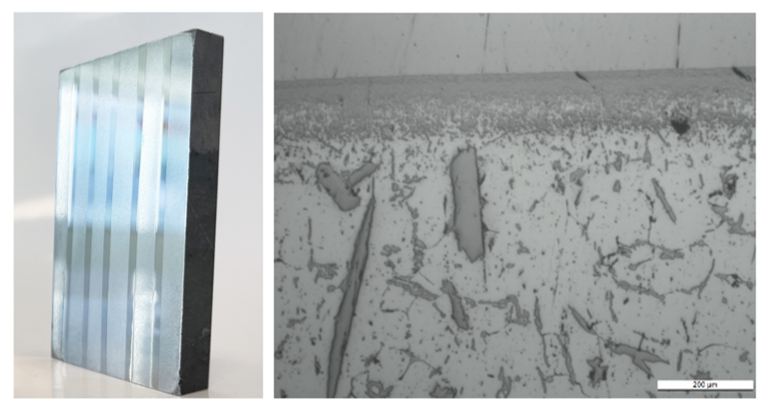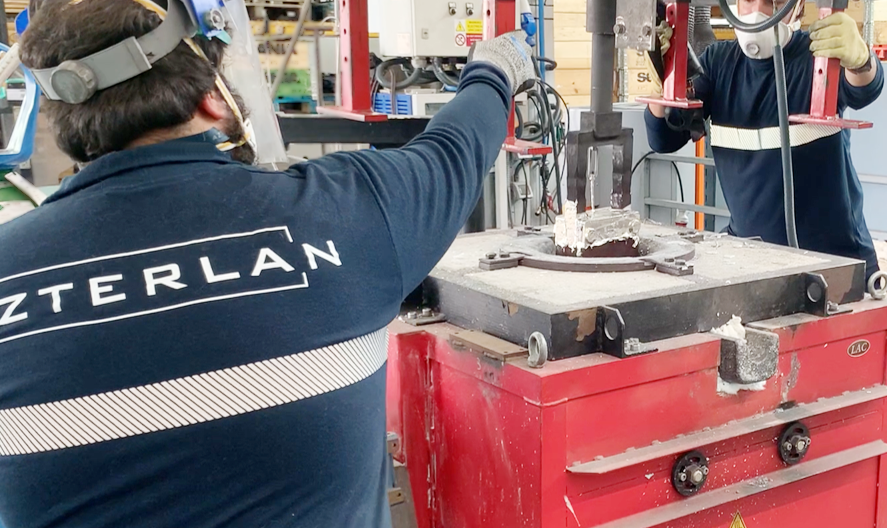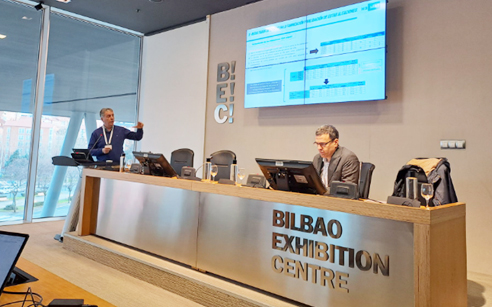AZTERLAN and GAIKER technology centers, members of the Basque Research and Technology Alliance (BRTA), have cooperated on the design, manufacturing and validation of a new multi-layer and multifunction composite.
Following the work performed within Hiperion project (completed in 2022), the research team of Hiperion II project continues to work on the development of new technologies aimed at improving the competitiveness of Basque Euskadi linked to the space industry, specifically, through the development of new technologies and techniques that meet the scientific and technological needs of future planetary missions.
As explained by Fernando Santos, head of the Special Materials and Processes research line at AZTERLAN, “materials play a crucial role to enable space trips and to address planetary missions. Due to the specific conditions under which they have to work (very low temperatures, high radiation,…) the performance and functionality of the components and equipment are specially compromised.”
With this aim, research teams from GAIKER and AZTERLAN have worked together on the development of new multifunction materials aimed at responding to the following challenges:
- Heat accumulation associated with engines, people and electronic and vital equipment.
- Exposure to significant radiation levels on long trips.
- Resistance to impacts caused by external objects.
- Weightlightening to facilitate the scope of the missions.
To address these challenges, they have focused on the development of materials that offer a high reflectability of non-ionizing radiation, which is responsible for heating the spacecraft, and the ability to absorb ionizing radiation, harmful to the health of astronauts, while beign lightweight and offering good resistance to impacts at low temperatures (close to -200ºC).
As a result, the team has created an innovative multilayer hybrid composite. “It could be said that we have developed a multi-layer armor that, based on the multifunctionality of the material, has the ultimate objective of preserving human life during space trips to distant planets.”

Manufacturing process of the new multilayer and multifunction composite in AZTERLAN facilities.
The new multi-material composite, which will be patented along with its manufacturing process, is composed of a layer of aluminum in the outer area, which offers a reflectivity higher than 80% in non-ionizing radiation and allows the lightening the weight of the structure a layer of stainless steel, with high mechanical and impact resistance along with a high corrosion resistance; and an organic compound with high mechanical properties and the ability to absorb energy from ionizing radiation.

Left. Multilayer structure of the composite. Right. Macrostructure of the joining point of the different materials forming the new composite.
The Hiperion II project “Generation of knowledge and capabilities for new space technologies and future planetary missions” is led by TEKNIKER technology center also a member of BRTA and is financed by the Basque Government within the Elkartek program (KK-2023/00077). Its completion is scheduled for the end of 2024.


